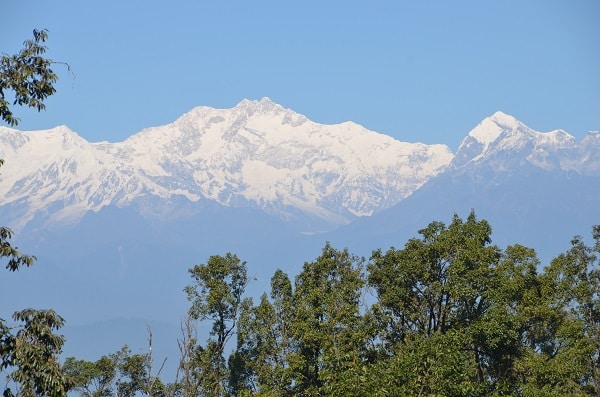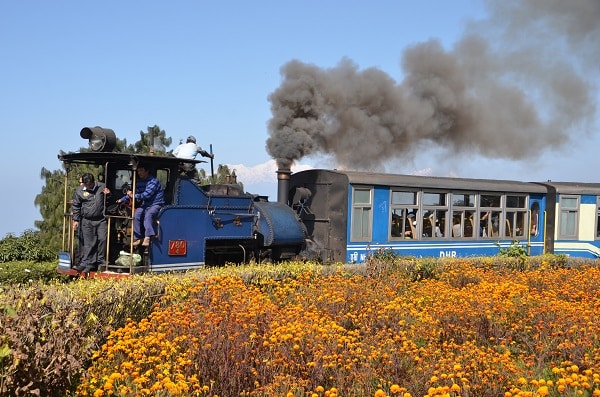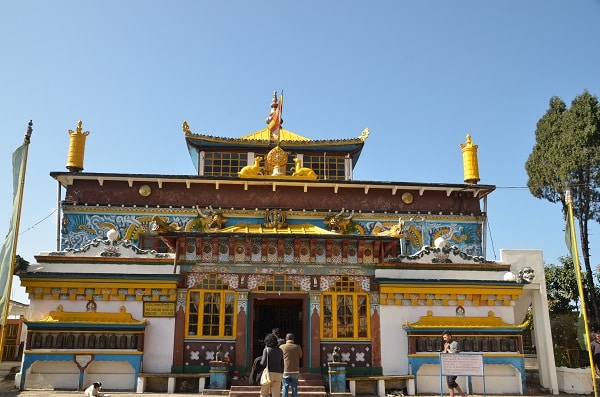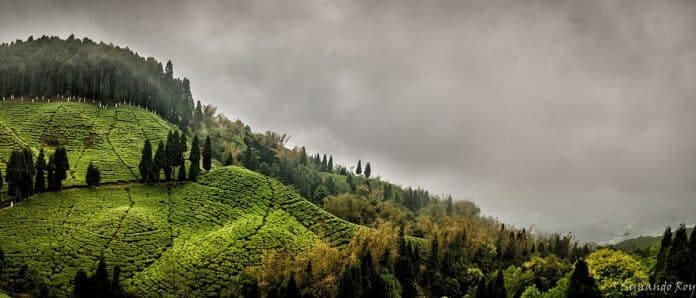Think Darjeeling, and it is highly likely that what pops into your mind is a good cup of tea.
However, discerning travellers worldwide are drawn to this hilly tea-region in eastern India not just for the top quality of the brew or by the lushness of the gardens from where it originates, but more by its picturesque Himalayan setting. Sitting at a height of 2000m, the snow-capped Mt Kanchenjunga – the world’s third-highest peak – towers over the azure sky in this tranquil town.
A former Gurkha village at the foothills of the Himalayas, Darjeeling was spotted by the British colonisers in the 19th century as an ideal escape during the hot Indian summer months when their imperial capital Calcutta, now called Kolkata, became near unliveable for them. Darjeeling then belonged to the Kingdom of Sikkim, who called this nest ‘Dorji Ling’ meaning ‘the land of the thunderbolt’. The British managed to buy it from the royals and transform it into a settlement fit for filing their colonial duties. The hilly landscape soon got packed with palaces for the British Governor-General and Indian Maharajas, colonial office buildings for administrative staff and quaint cottages for the affluent, alongside hotels, restaurants, clubs and shops lining winding thoroughfares. European missionaries moved in to establish boarding schools which were comparable to their counterparts back home, while Scottish and English tea planters set about converting the rolling hills into plantations of tea.
Darjeeling soon became known as the ‘Queen of Hills’.
A century and a half later, not much has changed, other than the addition of some contemporary and lifestyle elements. The diva still retains her seductive charms to make it one of the most visited tourist destinations in India.

READ ALSO: India’s Freedom Struggle: Iconic Landmarks
Darjeeling is blessed with oversized scenery. It’s possible to see its spectacular Himalayan panorama from almost everywhere. However, Tiger Hill, the town’s highest accessible point, claims to be the most popular viewing platform. Many don’t mind the 3 am wake up call to be there at sunrise to watch how the first rays of the morning sun mystically change the colour of the white peaks of Kanchenjunga from crimson red to golden yellow.
It’s a celestial sight, but for late risers and crowd avoiders, Batasia Loop is the next best option. Laden with manicured gardens, streams and falls and a narrow-gauge railway track forming a loop, the spot offers an uninterrupted vista of Darjeeling’s landscape, Kanchenjunga and other unnamed Himalayan peaks. Though a lot of people throng the space, the eclectic serenity of the atmosphere keeps all quiet and arrested by the beauty of the scene, until the arrival of the ‘Toy Train’ – another iconic attraction of Darjeeling. Hauled by a century-old steam engine, the legendary train chugs into the loop to imbue a sense of a bygone era abruptly walking into the lives of onlookers. A sample of a great engineering feat, this fairy tale railway started operating in 1881, linking the torrid Bengal plains with the mountains. Now a UNESCO World Heritage-listed icon, it covers a much shorter distance as a wondrous memoir of the past.

After travelling to Darjeeling by this train in 1886, American novelist Mark Twain wrote, “The railway journey up the mountain is forty miles, and it takes eight hours to make it. It is so wild and interesting and exciting and enchanting that it ought to take a week.” While bestowing the railway’s old-world carefree charms, the shorter version of the legendary journey still evokes similar feelings.
The ethnic population of Darjeeling comprised of people from neighbouring Sikkim, Nepal and Bhutan. Their religion is Buddhism. So the quarter is home to many Buddhist temples, monasteries and stupas, the ensemble being a major attraction for visitors. Some of them are pretty expansive and showcase extensive artwork. Most well-known, is the Yiga Choling Gompa monastery. It exhibits wonderful murals and is home to some thirty monks from the Gelugpa School. Built in 1850, it enshrines a 5m-high statue of Jampa or Future Buddha and 300 beautifully bound Tibetan texts.
READ ALSO: Ten lesser-known museums of the world

Being at the foothill of the Himalayas, a visit to the Himalayan Mountaineering Institute can be a fascinating experience, particularly for the adventure-minded. Established in 1953 in honour of Tenzing Norgay after he and New Zealander Edmund Hillary conquered Mount Everest, it’s the training ground for mountaineering students. But the lure for outsiders is its museum, stocked with multiple exhibits that tell thrilling stories of many expeditions to Himalayan summits. Adjacent to the institute is a zoo which is home to rare species like red pandas, snow leopards, and Tibetan wolves that live in the snow-clad regions of upper Himalaya.
The magnetism of Darjeeling is intense enough to make the return journey to the plains somewhat pain-stricken, unless one departs with a promise to come back for another visit.
Fact File
Getting There Darjeeling is connected by air, rail and road with Kolkata the gateway city to eastern India. Contact Gaura Travel for the best flight connections from Australian cities to Kolkata
Accommodation Heritage plays an important role when discovering Darjeeling. That’s best experienced when staying at the Elgin Hotel.




